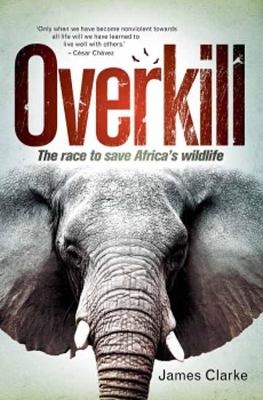
Overkill
Seiten
2017
Struik Nature (Verlag)
978-1-77584-577-5 (ISBN)
Struik Nature (Verlag)
978-1-77584-577-5 (ISBN)
- Titel ist leider vergriffen;
keine Neuauflage - Artikel merken
Ninety percent of the world’s megafauna (its larger creatures) have disappeared since humans migrated from Africa and fanned out across the rest of the world. Within a very short time the megafauna – mammoths, mastodons, woolly rhinoceros and the huge carnivores that preyed upon them were extinct. Only Africa seems to have escaped: not unscathed, but not entirely vanquished either. This book describes the history and extent of human impact on the world's wildlife (marine included), good and bad; it examines, in particular, the status of wildlife in Africa – the world’s last
great megafaunal sanctuary; and it questions whether Africa’s wildlife has reached its lowest ebb, and whether it is about to witness the turn of the tide? The author sounds a note of cautious optimism: conservation initiatives have gained a new urgency in the 21st century, and in Africa and elsewhere are showing increasing resolve to tackle poaching. Vast transfrontier parks, many still in development, have the potential to provide a sustainable habitat for the continent’s megafauna. If we can muster both local and international support, name and shame the rogue nations, and build a practical conservation model that does not conflict with human needs, then Africa’s wildlife can perhaps be saved.
great megafaunal sanctuary; and it questions whether Africa’s wildlife has reached its lowest ebb, and whether it is about to witness the turn of the tide? The author sounds a note of cautious optimism: conservation initiatives have gained a new urgency in the 21st century, and in Africa and elsewhere are showing increasing resolve to tackle poaching. Vast transfrontier parks, many still in development, have the potential to provide a sustainable habitat for the continent’s megafauna. If we can muster both local and international support, name and shame the rogue nations, and build a practical conservation model that does not conflict with human needs, then Africa’s wildlife can perhaps be saved.
James Clarke has been writing for daily newspapers since the age of 16, first in Birmingham, then in Johannesburg. Early in his career he developed an interest in environmental affairs, both urban and rural, and he has written extensively on the topic ever since. He was one of the three founders of the Endangered Wildlife Trust and has written a range of books, mostly humorous. More recently he published Save me from the Lion’s Mouth with Struik Nature.
| Erscheinungsdatum | 23.11.2017 |
|---|---|
| Sprache | englisch |
| Maße | 153 x 234 mm |
| Themenwelt | Sachbuch/Ratgeber ► Natur / Technik ► Natur / Ökologie |
| Sachbuch/Ratgeber ► Natur / Technik ► Naturführer | |
| Reisen ► Reiseführer ► Afrika | |
| Naturwissenschaften ► Biologie ► Ökologie / Naturschutz | |
| Sozialwissenschaften ► Soziologie | |
| ISBN-10 | 1-77584-577-X / 177584577X |
| ISBN-13 | 978-1-77584-577-5 / 9781775845775 |
| Zustand | Neuware |
| Haben Sie eine Frage zum Produkt? |
Mehr entdecken
aus dem Bereich
aus dem Bereich
über 500 faszinierende Gesteine, Minerale, Edelsteine und Fossilien
Buch | Hardcover (2023)
DK Verlag Dorling Kindersley
26,95 €
Familien und Gattungen einheimischer Pflanzen
Buch | Hardcover (2022)
Haupt Verlag
64,00 €
Klimaschutz zerstört die Wirtschaft! ... und andere Stammtischparolen …
Buch | Softcover (2024)
Komplett-Media (Verlag)
24,00 €


